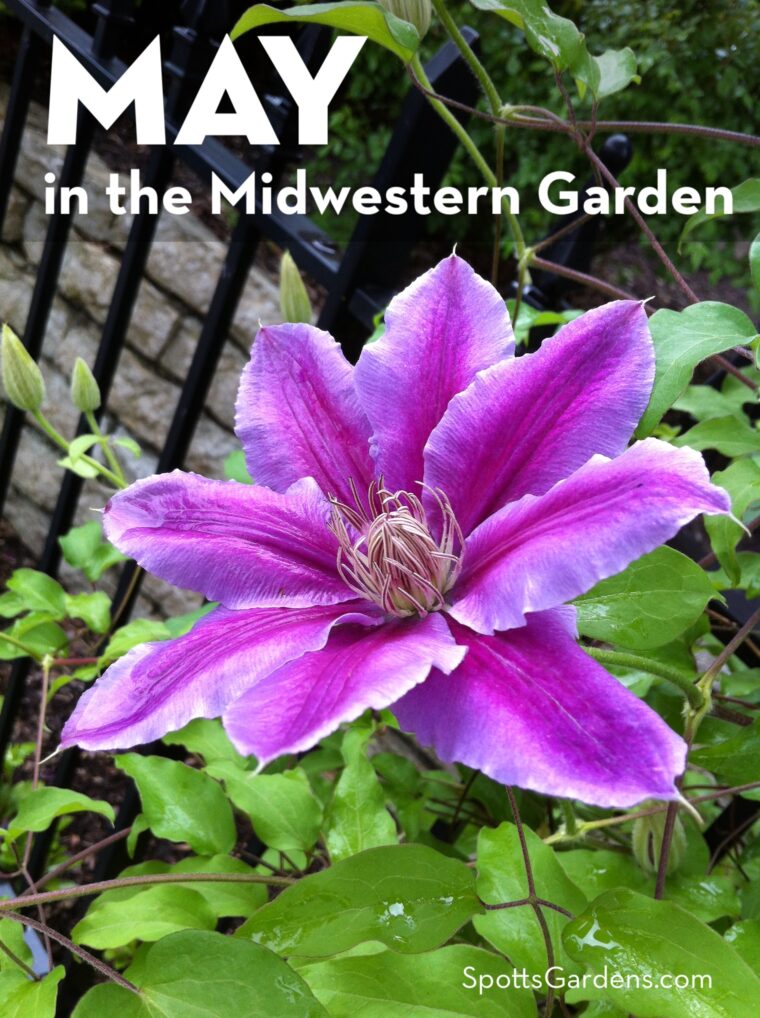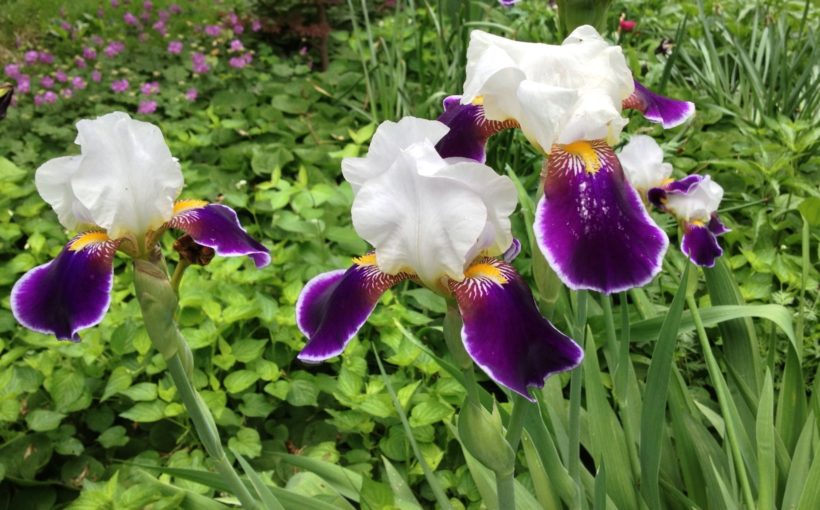May is one of the most glorious months in the Indiana garden. Here in Indianapolis, we’re weeding, mulching, and pruning spring-blooming shrubs and trees. Once the frost-free date passes in mid-May, we’ll start planting summer container gardens and tender herbs.
What To See in the May Garden
- Peonies burst into bloom in yards, accompanied by the first of the roses.
- Woodland flowers finish their spring blooming, while perennial geraniums are hitting their stride.
- Trees are setting fruit. Watch for tiny apples, crabapples, pears, and cherries.

What to Do This Month
There’s so much to do in the garden in May! Contact us for a free estimate for landscape work in Indianapolis, including mulching and pruning, as well as projects like these:
- Removing invasive plants and clearing thickets.
- Designing new ornamental gardens or kitchen gardens to be ready to plant this spring.
- Installing hardscape projects like natural stone patios.
- Scheduling garden coaching. Our coach can help you identify plants, offer design ideas, suggest solutions for problem spots, or give a hands-on lesson in pruning.
May in the Organic Garden
- Mulching beds and tree rings with hardwood mulch to suppress weeds and retain soil moisture.
- Pruning spring-flowering shrubs after they bloom.
- Planting containers and window boxes with summer plants like coleus, impatiens, pot geraniums, and petunias.
- Completing hardscape projects or improving site drainage.
- Let bulb foliage ripen until it turns brown before cutting it back. Bulbs need that time to store up energy to bloom next year.
- Bring out your houseplants to summer in the garden.
- If you want to fertilize your lawn in spring, May is the best time. Try a good organic fertilizer, such as WOW! Plus, instead of a synthetic one.
May in the Kitchen Garden
- Plant out tomatoes, peppers, eggplants, and other transplants after the frost-free date on May 12.
- Sow warm-weather vegetables like beans, pumpkins, squash, corn, and edamame directly into the garden.
- Mulch the kitchen garden after all the vegetables are planted.
- Thin out fruit on on fruit trees about three weeks after the petals fall off to be sure that each fruit has enough room to develop and the branches are strong enough to support the crop. Apples should be about 8″ apart; peaches should be about 6″ apart.
- Harvest the earliest of the spring crops.
